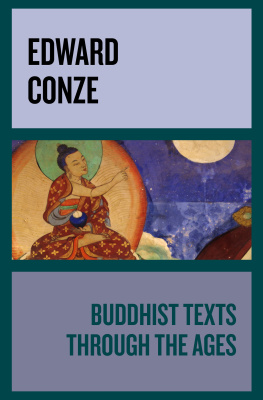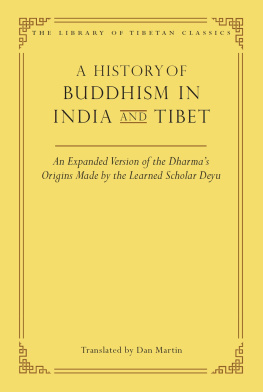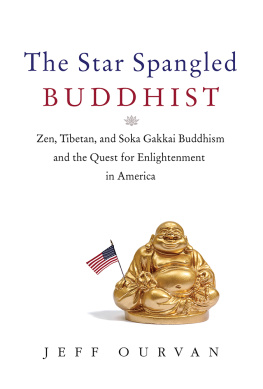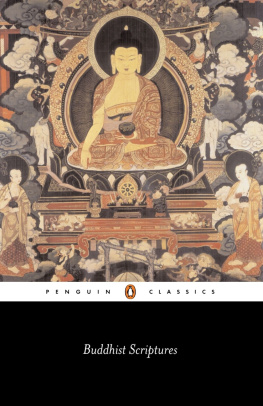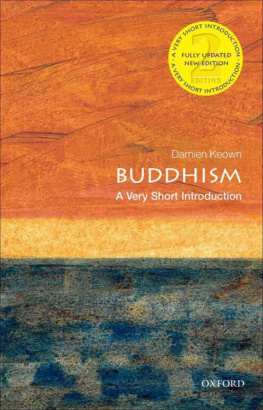There is no such thing as a Buddhist Bible, in the sense of an authoritative statement of the teachings of Buddhism, and this for two reasons. First, because the Buddhist recognises no authority, human or divine, for what is truth, or even for what Gautama the Buddha taught mankind; and secondly, because the range of country, language and time involved in the term Buddhism makes such a volume impossible to compile.
Buddhism, in the sense of the field of thought which has grown up about the Buddha's name, was born in North India in the sixth century B.C., but within a thousand years or so it was established outside the land of its birth in at least ten countries, each with a different language, and for fifteen hundred years the volume of Scriptures has been growing steadily. These Scriptures range from the value of Sutras, meaning Sermons, alleged to be given by the Buddha, to minor Commentaries admittedly written a thousand years after the life of the Master. Yet few would claim that any Sutra (in Pali: Sutta) is in fact in the Buddha's own words, whereas many of the Commentaries, and the original sermons of later writers, are regarded as only second in value to the Teacher's words. In its long history Buddhism has produced a number of the greatest minds, and the Scriptures are not closed. Such men are still with us, and in the absence of any better scriptural quotation for the very deep teaching of the Kegon School of Japanese Buddhism I have not hesitated, for example, to include an extract from an Address to the Emperor of Japan by Dr. D. T. Suzuki which was later published as The Essence of Buddhism (see No. 106).
The Buddhist Scriptures, then, are a vast collection of writings in a dozen languages having this in common, that they stem from the Buddha's Enlightenment as expressed through the medium of his own or lesser minds, and that they have the same basis of Teaching which is herein given as the Four Noble Truths. (See No. 19.) The rest is the Middle Way, a Way to be trodden by each and every Buddhist as he works out his own salvation with diligence to the same supreme Enlightenment.
I have said that the Scriptures have no authority. Not one word of them is dogmatically presented, and Buddhism is unique in this, that the Buddhist would refuse to take them as binding upon his mind even if they were proved to be the Master's actual words. In a famous passage (No. 22) the Buddha tells his followers in terms to rely on no authority whatsoever, not even his own words, unless they accord with reason and experience, and when applied in action ease the way to the attainment of Nirvana. In the absence of all claim to authority, or the least thought of dogma, two facts emerge; first, that Buddhism is not bound to any event in history, and would remain what it is even if it were proved that the Buddha never lived, and secondly, that in the complete absence of authority, tolerance for a different point of view can afford to be absolute.
Our Western knowledge of the Scriptures is not yet a hundred years old. First came sporadic translations of odd Scriptures; then, a mere seventy years ago, Max Mller's Sacred Books of the East gave Western minds an inkling of the treasures awaiting them. Anthologies from corners of the Buddhist field appeared from time to time, ranging from Beal's Catena of Scriptures from the Chinese (1871) to Warren's Buddhism in Translations (1906) from the Pali Canon of the Theravada School of Ceylon. Dr. and Mrs. Rhys Davids, and Miss I. B. Horner, through the medium of their Pali Text Society, have given us a complete translation of the Pali Canon of that School, but the Mahayana Scriptures of India, China, Japan and Tibet are still but a tithe explored.
The first attempt at an anthology drawn from the whole field was only made in 1938, in the second edition of Dwight Goddard's A Buddhist Bible, but the versions there given are far too free to be worthy of their subject. Then came Clarence Hamilton's Buddhism, a Religion of Infinite Compassion (New York, 1952), chosen primarily for college students; but the best anthology to date, Buddhist Texts through the Ages, published in London in 1954, and edited by Dr. Edward Conze, was composed of translations from the original languages by a team of experts, Miss I. B. Horner for Pali, Dr. Conze for the Indian Mahayana, Dr. David Snellgrove for Tibet and Dr. Arthur Waley for China and Japan. This was gravely deficient in Japanese Scriptures and in Zen, and the same applies very largely to E. A. Burtt's The Teachings of the Compassionate Buddha (New York), 1955. Dr. Conze's second selection, his Buddhist Scriptures, in Penguin Classics, is again weak in China and Japan. Yet each of these selections has its own flavour and value, and each reflects, as no doubt does my own, the chooser's predilections, whether consciously retained or not. Having worked in the Buddhist movement in England for forty years I have acquired a working knowledge of a large part of the Buddhist field, and having the advantage of belonging to no one School I can at least attempt to be impartial in my choice for an anthology. But like any other anthologist I have worked to principles in my choosing, and it is only right that I should state them here.
As the title of the book makes clear, this is a work on the Wisdom of Buddhism. I have therefore omitted the Life of the Buddha as given in the Pali Canon, and I have included little of mythology or of the Buddhist Order.
In the space available I have kept to the centre of the Teaching, and have therefore given but little of the Tantra of Tibet, the late and elaborate Abhidhamma teaching of the Theravada School, or of the Pure Land School of present-day Japan.
As the book is for the general public I have used the minimum of foreign words, and no diacritical marks. The foreign terms retained are in my view a necessity. It is literally impossible to use any one English term to translate Nirvana, Dharma, Karma, Tathagata, and the like, whether in their Sanskrit or Pali form. The reader will slowly absorb the meaning of these terms in the course of his reading, and wise use of the Buddhist Society's A Buddhist Students Manual, with its elaborate Glossary, Analysis of the Scriptures and Bibliography will solve most of his linguistic problems.
I have tried to allot the right proportion of space to the various Schools in the vast field of Buddhism. In round figures I have given a little less than a third to the Theravada School of Ceylon, Burma and Thailand, the same to the Indian Mahayana Schools and their Scriptures, and the same to the Buddhism of China and Japan. The remaining short chapters are of subjects in which the material is itself a cross-section from the various Schools.






